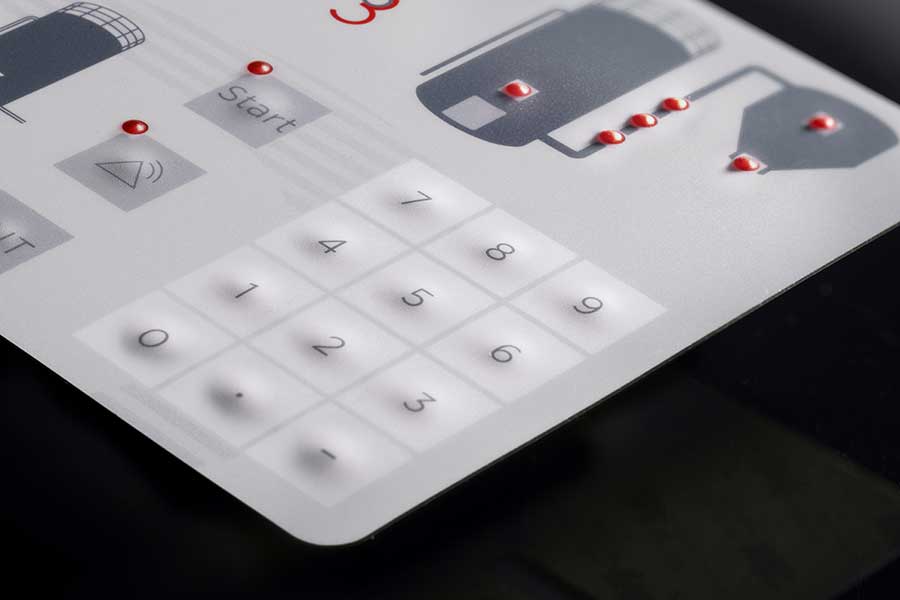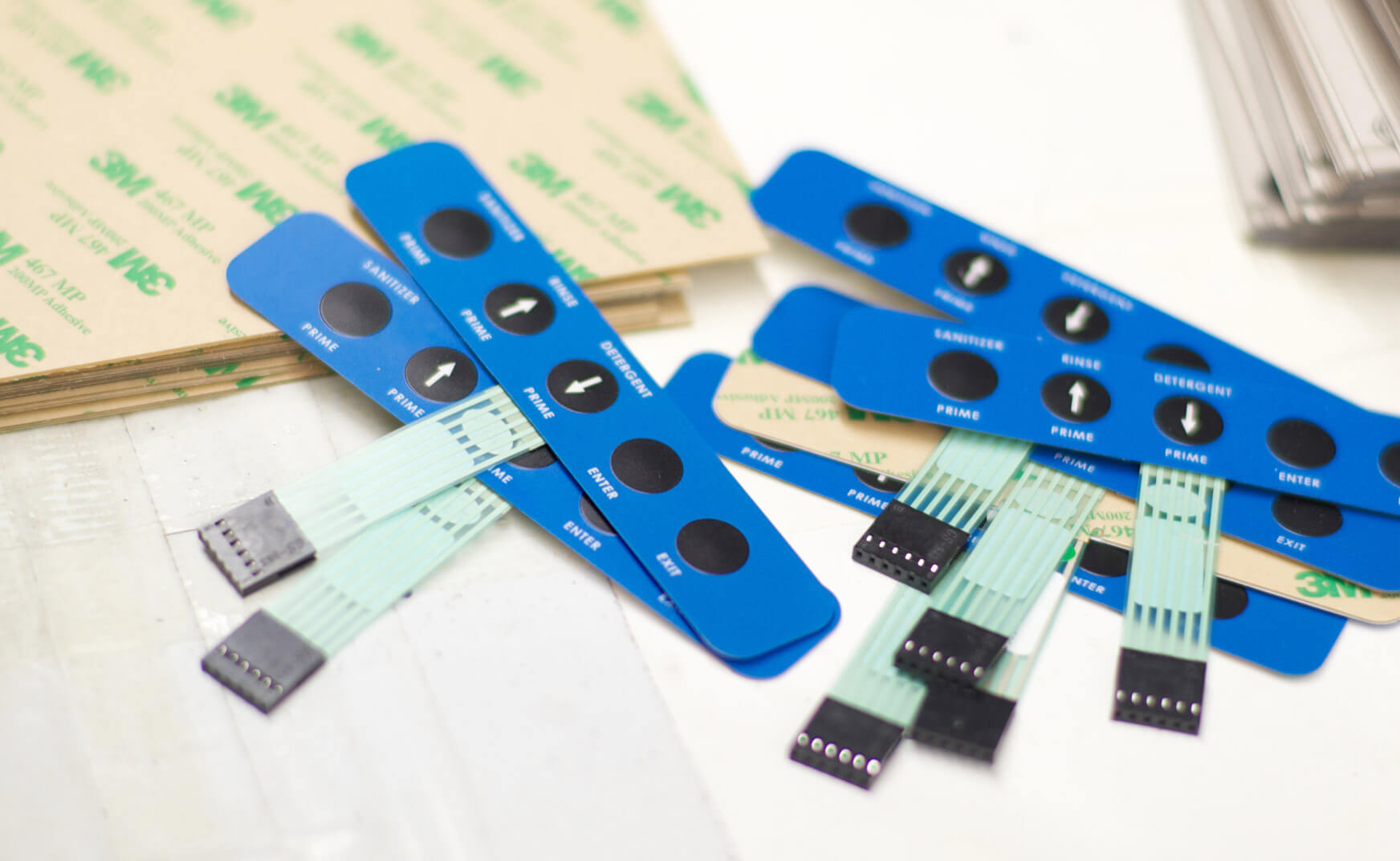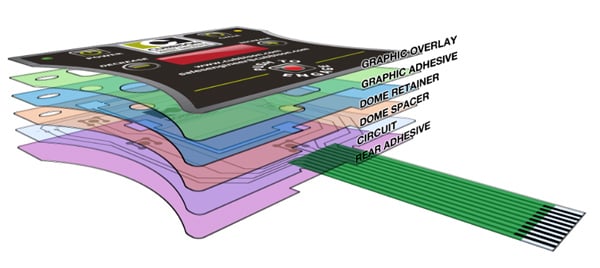Membrane Switches: A Crucial Component in Personalized Control Panels
Membrane Switches: A Crucial Component in Personalized Control Panels
Blog Article
Membrane Switch Over Innovation: The Trick to Reliable and Cost-efficient User Interfaces
Membrane button innovation has arised as an essential element in the layout of user interfaces, giving both integrity and cost-effectiveness throughout a varied variety of applications. As we explore the diverse benefits of membrane layer switches, their potential for innovation raises inquiries regarding future applications and developing patterns.
Comprehending Membrane Switch Modern Technology
Membrane layer button innovation is a widely made use of interface remedy in different digital devices, using a smooth mix of functionality and style. This technology incorporates multiple layers of products, normally including a visuals overlay, spacer layer, and a circuit layer. The visuals overlay displays the interface elements, while the spacer layer separates the circuit layer from the overlay till a user triggers a button.
When pressure is put on the overlay, the circuit layer finishes the electric circuit, sending out a signal to the device. This device allows for various arrangements, including tactile feedback and backlighting options, improving user interaction. Membrane buttons are commonly made using sturdy materials such as polyester or polycarbonate, making sure longevity and resistance to environmental elements like moisture and dirt.
The adaptability of membrane changes allows their application in varied markets, including medical gadgets, consumer electronics, and commercial controls. Their compact design enables assimilation right into space-constrained environments, giving a reliable customer interface without endangering aesthetic appeal. Recognizing the ins and outs of membrane button innovation is essential for producers and developers seeking to produce trusted and effective human-machine interfaces.
Key Benefits of Membrane Layer Buttons
While different interface services exist, membrane layer switches offer distinctive advantages that make them a recommended choice in numerous applications. One of the key benefits is their resilience; membrane layer buttons are made to withstand extreme environmental problems, consisting of wetness, dust, and temperature variations, ensuring durable efficiency. This strength dramatically reduces the requirement for regular substitutes, thereby reducing total maintenance prices.

Moreover, membrane buttons are lightweight and small, making them suitable for applications where room is restricted. Their low-profile design contributes to a streamlined appearance without jeopardizing functionality.
Cost-effectiveness is likewise a significant advantage, as the manufacturing process for membrane switches tends to be cheaper contrasted to typical mechanical switches. This affordability, incorporated with their integrity and convenience of installation, positions membrane switches over as a sensible solution for a vast array of industries looking for efficient and reliable interface.
Applications Across Different Industries
How do membrane switches adapt to the varied requirements of numerous industries? Membrane layer button innovation is increasingly identified for its versatility, making it ideal for a broad array of applications throughout several industries.
In customer electronic devices, membrane buttons offer a small remedy for remote controls and home devices, improving user experience with instinctive style. In addition, the commercial sector leverages membrane buttons for machinery control panels, gaining from their resistance to extreme environments, such as wetness and dust.
Armed forces and aerospace applications also make use of membrane switches for their reliability and capability to withstand extreme problems, making sure operational efficiency in important situations. The food and beverage market adopts these switches for automated systems, where sanitation and convenience of operation are paramount (membrane switch). Eventually, membrane layer switches are tailored to fulfill the distinct demands of each market, verifying their essential function in modern technology user interfaces
Style and Modification Alternatives

In the world of membrane button modern technology, style and modification choices play a pivotal role in improving capability and user interaction. These buttons can be tailored to satisfy particular operational requirements and aesthetic preferences, making them versatile components in different applications.
Among the main personalization alternatives is the design of the switch itself, which can be created to fit unique interface and ergonomic considerations. By adjusting the shape, size, and arrangement of switches, producers can develop intuitive designs that promote ease of usage. Additionally, the consolidation of different shades and visuals overlays enables branding and improved presence, guaranteeing that individuals can quickly determine features.
Additionally, membrane switches can be engineered with numerous responsive responses devices, such as increased switches or audible clicks, to improve the individual experience. Various products can also be selected for sturdiness and environmental resistance, attending to aspects such as moisture, temperature level fluctuations, and chemical exposure.
Inevitably, the considerable layout and customization options check here offered in membrane layer button modern technology encourage companies to develop tailored services that not only meet useful needs however also straighten with their branding and operational demands.

Future Patterns in Membrane Switches
As membrane switch technology remains to evolve, future patterns are significantly concentrated on improving user experience and incorporating sophisticated performances. One considerable pattern is the combination of touch-sensitive and capacitive technologies right into conventional membrane layer buttons. This growth permits more instinctive interface, giving tactile comments while maintaining a sleek layout.
An additional arising pattern is using environmentally pleasant materials, driven by the growing need for lasting manufacturing methods. Suppliers are looking for to minimize their carbon footprint by making use of recyclable substrates and low-impact inks, aligning with international sustainability objectives.
Furthermore, the rise of the Net of Things (IoT) is prompting the look at here now unification of clever attributes right into membrane buttons. Improved connectivity choices will enable devices to connect with each various other, enabling seamless assimilation into wider systems.
Furthermore, innovations in printing technologies, such as digital printing, are important link permitting better layout flexibility and modification. This makes it possible for suppliers to create complex layouts and lively shades cost-effectively.

Verdict
Finally, membrane switch modern technology stands for an important technology in individual interface layout, providing considerable benefits in resilience, customization, and cost-effectiveness. Its prevalent applicability throughout diverse sectors highlights its relevance in contemporary technology. As advancements remain to arise, specifically in touch-sensitive interfaces and sustainable products, the possibility for membrane layer changes to enhance customer experience and capability stays encouraging. Continued expedition of this innovation will likely yield better improvements and widen its scope in future applications.
Report this page